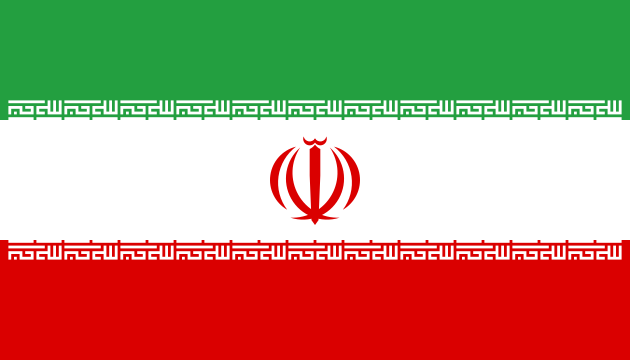Human Rights Abuses & Violations against the Kurdish Minority in Iran:

By Qasim Swati (United Kingdom)
The Islamic Republic of Iran is home to the second largest Kurdish minority in the world. Iranian Kurds are estimated to be around 8.2 – 12 million, equivalent to about between 10% or, according to a report published by Amnesty International, as many as between 15 – 17 per cent of the total 82,531,700 (2018 estimate) population of the country. The Iranian Kurdish-populated regions, mainly, include such parts of the country, as the provinces of Kermanshah, Kordestan (Kurdistan Province), West Azerbaijan, Ilam in the west and south-west of the country, Tehran and some Kurdish population can be found in the Province of North Khorasan in north-eastern Iran, as well.
Amnesty International is a worldwide movement of 2.2 million people, campaigning on human rights, in more than 150 territories and countries of the world which has published a report on human rights abuses against the Kurdish minority in Iran (first published in 2008 by Amnesty International), covering developments of human rights abuses up to May, 2008.
The practice of violating the human rights of the Iranian Kurds is not a new phenomenon, but this is a situation, fact or occurrence that is as old as, even older than 838, when many Kurds were put to death (killed) by Itakh (the commander of Caliph Al – Mu’tasim) after defeating Mir Jafar (a Kurdish leader, based in Mosul) who revolted against the Caliph. Nevertheless, the report by Amnesty International has described numerous human rights abuses against the Kurdish minority in Iran.
This is a huge list of these human rights violations, but some of them include such anti-Kurdish activities, as economic negligence of Kurdish-populated regions in Iran; forced evictions of Kurds and destruction of their homes; stopping Kurdish parents from registering their newborns with specific Kurdish names; stigmatization, abuse and isolation of Kurdish religious minority groups (particularly Sunni Kurds) and discrimination against them; denial of equality in employment and political participation of Iranian Kurdish population; creating problems for the usage/practice or use of Kurdish language in the country; arbitrary arrests and prosecution of Kurdish journalists, community activists and human rights defenders; double persecution, victimization and oppression of Kurdish female population (women and girls); worse and unsatisfactory housing and living conditions for the majority of Kurdish people in the country; problems for Kurds in education system of Iran; unfair trial and death penalty; unlawful murders by security forces and suppression, repression or squashing of expression, views and opinions, etc.
Approximately, 10,000 Kurds were killed, thousands of them sentenced to death after summary trials, and scores of their towns and villages destroyed by the order of Ayatollah Ruhollah Khomeini, the first Supreme Leader of the Islamic Republic of Iran, by mid – 1979 after the start or breaking out of armed conflict between the armed Kurdish groups (especially the Marxist group, Komala, and the KDPI or the Kurdish Democratic Party of Iran) and the then government’s Revolutionary Guards (the Islamic Revolutionary Guard Corps).
Above all, the Kurdish female population of Iran suffers the most. The Kurdish women and girls undergo many discriminatory and anti-human rights practices due to living in a marginalised community under a social and cultural system, run by patriarchal customs. They are both the victims of the Iranian authorities and the male population within their own Kurdish community. That is why a frequently quoted/oft-quoted phrase among the women human rights defenders in Kurdish-inhabited regions of the country is so famous, which reads, as: “We are both women and Kurds; so, in the Islamic Republic of Iran, we are doubly accused.”
Kurdish women and girls are mistreated and abused, in various forms, both by the government authorities or state officials and even more at the hands of their own relatives, friends and family members within their own Kurdish community.
As living under a system, controlled by patriarchal customs and traditions, men in the Kurdish community are in the position to control, almost, the entire activities of their female population. Kurdish women have, in theory and practice, been deprived of their basic human rights by their male population. Consequently, Kurdish women are victims of different human rights abuses, including unequal opportunities in all walks of life; rape and all other forms of sexual assaults, harassment and gender discrimination; lack of justice; forced and early marriages; honour killings and suicide (mainly by self-immolation).
Self-immolation is the act of setting fire to oneself, especially as a form of protest or sacrifice in order to destroy or cause serious harm to one’s body, and this is a more common practice, taking place, in all the areas where Kurdish people live.
Some of the worst examples of deaths, as a result of self-immolation and honour killings, in Iran, include the deaths of over 150 Kurdish women – aged between 14 and 30 – and less educated, in West Azerbaijan Province of the country, the report being published by the Human Rights Organization of Kurdistan (HROK) in early 2006.
Similarly, 65.6% of self-immolation victims of 1,089 cases at the then two burn centres (hospitals specializing in the treatment of burns) in Kurdistan Province (Kordestan), according to a six-year study, conducted between 1994 – 2000, were women, while 58 per cent of such burned patients were under the age of 20.
Likewise, 82% of the 433 recorded cases of self-immolation, resulting from a study, carried out between 1995 – 2002 in Ilam Province, were women.
Qasim Swati is a freelance journalist, writer and human rights activist, based in the UK, and can be reached at https://qasimswati.com or mailto:info@qasimswati.com.

